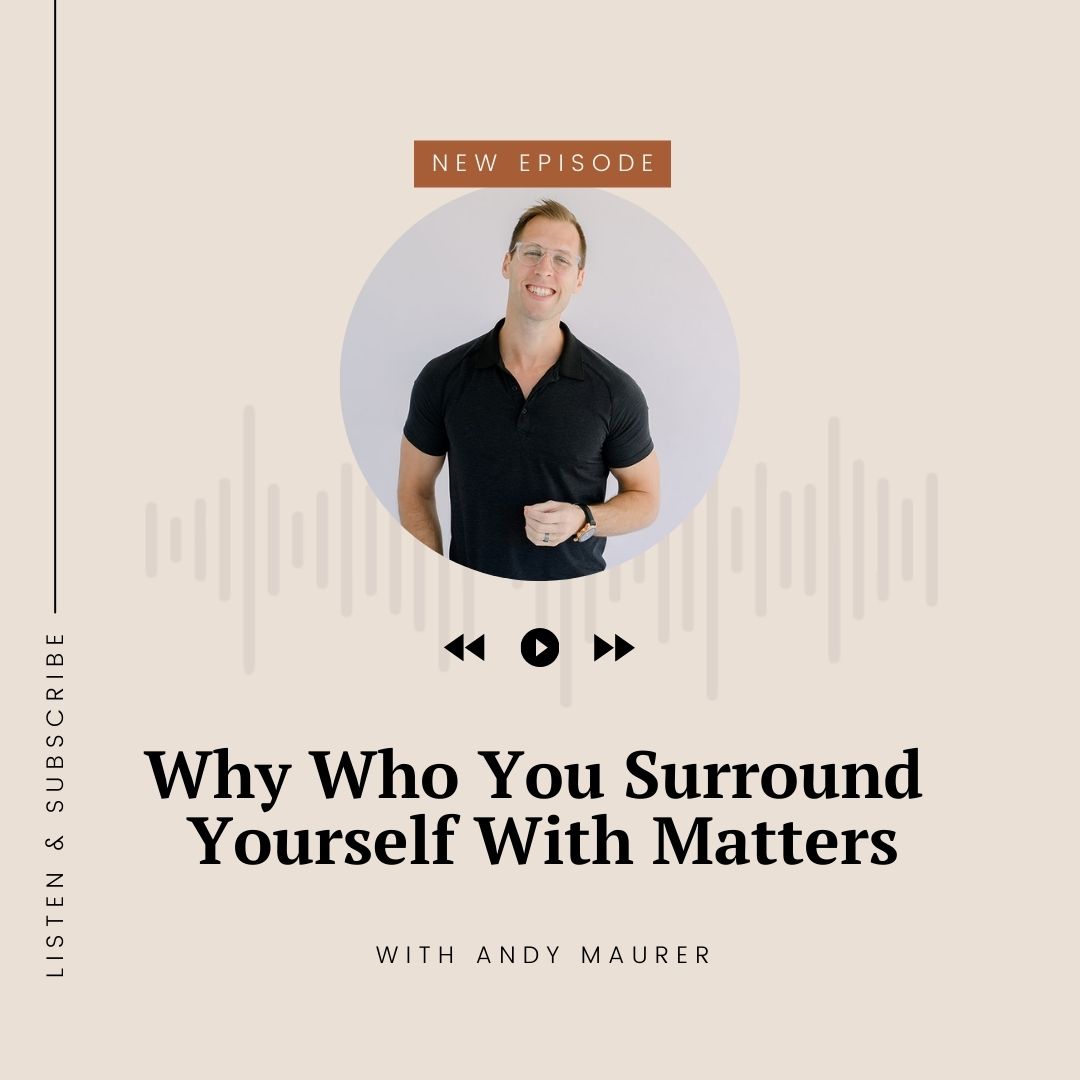Does our behavior and lifestyle impact those closest to us in either positive or negative ways?
[02:47] Framingham Heart Study
- People in the study were 57% more likely to become obese if they had a friend who was obese.
[03:12] In researching emotional health, the study found that those who had a happy friend had a 15% increase in their own happiness. Amazingly, they found that having a friend whose friend’s friend is happy (3 degrees of separation), still increased a person’s happiness by 6%
[04:25] Questions to ask yourself
- Who are you surrounding yourself with as a leader.
- How is that impacting your Beliefs and what you engage in as a high performer?
[04:44] Many leaders don’t slow down enough to ask what’s actually happening on the inside, yet they express fear that they’ll reach the end of their life having sacrificed the most important things they value.
[06:00] Andy describes homeostasis. Homeostasis is not about change. It’s about a resistance to change to keep things the same. This is not helpful for a leader who prioritizes growth & success.
[07:30] Growing as a leader reveals growth (or lack of growth) in the people around you. Unhealthy cultures try to pull you back down to a place of dysfunction.
[08:48]The 3 P’s:
- Leaders who know how to be present
- Leaders who know how to prioritize
- Leaders who know how to feel pain
[09:00] How do we identify if a person is present? First, identify a lack of presence.
Are they constantly checking their phone? Do they turn and notice everything going on around them rather than keeping eye contact during a conversation? This indicated that the mind isn’t focused on the present moment.
Someone who is constantly distracted by what matters least in life will consistently distract you from what matters most in life.
[10:00] Identifying a present leader:
- A present leader is going to put their phone away and give you their full attention
- A present leader is going to ask you to tell them more instead of telling you more about themselves.
- A present leader will maintain eye contact around you rather than looking at everyone else around them
- A present leader is going to take deep breaths when they feel anxious, rather than tightening up their body and hiding their anxiety.
[11:32] Friends & leaders who know how to prioritize
If you don’t have the ability to slow down and take a deep breath, you’re not going to get any clarity on what matters most in life.
The part of our brain that allows logic and planning is activated when we breathe. Constantly moving from thing to thing keeps you stuck in survival mode.
Prioritizing as a leader means you can designate something as more important than something else.
[12:30] Identifying a leader who can prioritize:
Can they answer:
- What’s your most important objective this week? Today?
- What 5 things (or people) do you need to say no to right now?
- Who comes first and what matters most in life?
- What are you not willing to sacrifice to gain success?
[14:40] Leadership isn’t about avoiding pain, it’s about allowing it to shape you and transform you as a leader. Working through pain builds grit and opens the window to growth.
